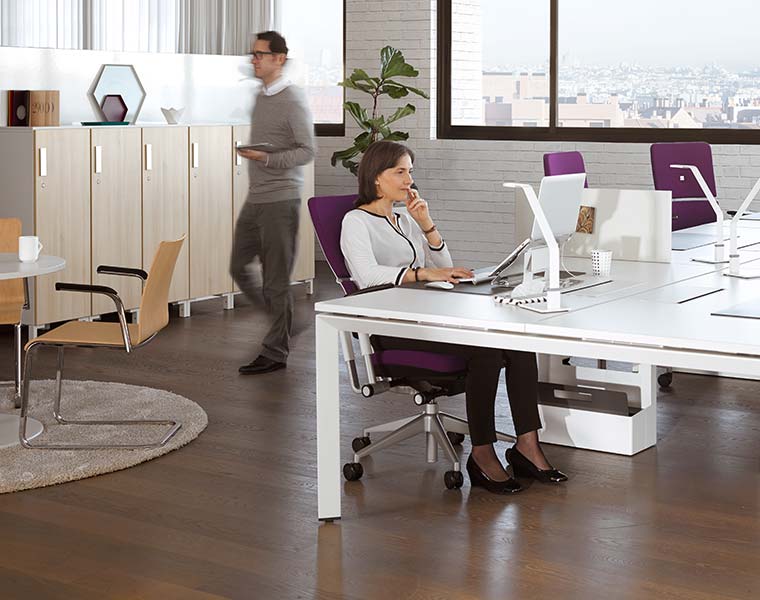When it comes to planning your office lay out, it goes without saying that business processes are paramount to the workplace design. However, an equally important consideration should be the requirements of your staff and the spaces they need to do their job well. From ensuring that ergonomics and functionality work in harmony, to encouraging communication between workers and giving access to the right technology – getting the design right can improve productivity and drive engagements.
Keep reading to find out how your workspace design can impact productivity levels and communication within the workplace…
Designing an ergonomic workspace
One of the most important things to consider when designing a workspace is office ergonomics. Long gone are the days when humans were required to work around the design; these days, workspace configuration, resources and furniture are people focused, designed to support and encourage each employee.
To ensure you’re prioritising usability over aesthetic, we suggest staff workshops and surveys, this approach enables you to understand the types of spaces your staff need, what’s more, it can help you to not only retain your best workers, but also help with attracting the best new talents. Research by Mindspace demonstrated that 25% of 18-24 year olds are desperate for more breakout areas and 23% want more space for private work yet from experience, many workspaces don’t provide this.
Read more about what millennials are looking for in a workspace here.
Don’t choose fun over function
In a similar vein, it’s also important that you don’t choose novelty over function. In our article discussing when office design becomes nothing more than a gimmick, we explored how any design decisions should be made with social science and strategic workspace planning in mind.
Don’t make out-there design decisions for the sake of being quirky or trying to convince outsiders that you’re on the cutting edge of your industry because you’ll end up wasting time, money and valuable space in the long run.
Consider your brand image and messaging
Along with functionality and optimising the workspace for increased collaboration and productivity, factoring your brand identity into the equation is also extremely important. Your physical workspace is an extension of your business so this needs to be projected to not only your workforce but also to clients, customers and partners when they come in for meetings.
Will the design help or hinder communication?
As well as being successful at delivering your brand values and messages, the workspace also needs to stimulate positive communication lines between staff. We’ve previously shared our advice on how to improve communication in a large office but regardless of office size, communication is key.
Provide spaces that support, not hinder communication; from dedicated collaborative meeting areas, through to tools to delivering messages more dynamically to staff such as digital signage – every space provides an opportunity.
Catering for different types of work setting
In today’s modern working world, structured workspaces are a thing of the past. Instead, we need flexible, multifunctional spaces that cater for a wide variety of purposes. Collaborative spaces, private focus settings and training rooms are some of the best ways to get the most out of your workforce by encouraging communication and more efficient co-working.
However it’s also important that you provide breakout areas and social spaces to give staff the chance to interact casually as well as relax, re-energise and return to their desk in a positive frame of mind.
Once you’ve taken all of these elements into consideration, we also recommend getting to know your ABCs of office acoustics. A well-designed workspace may look great and boost collaboration tenfold but if staff are distracted by excess sound or constantly interrupted by noise, all of your hard work won’t be worthwhile.

